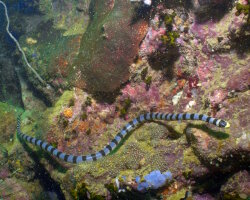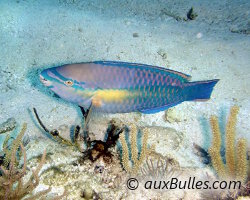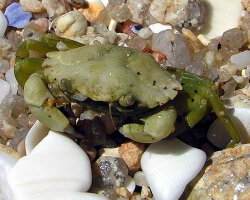Sealife guideThe spanish hogfishBodianus rufus
Last updated on 07/31/2025 at 11:38 PM
Taxonomy
- Common name: Spanish hogfish
- French name: Labre espagnol
- Spanish name: Vieja española
- Scientific name: Bodianus rufus (Linnaeus, 1758)
- Family name: Labridae
- Order name: Perciformes
- Class name: Actinopterygii
Description
The spanish hogfish stands out with its vivid coloration, featuring bright yellow on the front of its body and a bluish to purplish area along the dorsal side, where reddish gaps appear between the scales, extending from the eye to the rear of the dorsal fin. This same coloration is also visible at the base of the anal fin.

The spanish hogfish (Bodianus rufus)
The spanish hogfish typically measures around 8 to 10 inches in length, but the largest individuals can reach up to about 12 inches.
Geographic range
The spanish hogfish inhabits the tropical and subtropical waters of the western Atlantic ocean, ranging from the southern coast of Florida in the north down to Brazil in the south. Its range includes the Gulf of Mexico and the Caribbean sea, around many islands such as the Bahamas,
Guadeloupe, Martinique, …
Habitat
The spanish hogfish is found on coral reefs and around rocky formations at depths of up to 230 feet.
The spanish hogfish is a diurnal species, living alone or in small groups and displays territorial behavior, especially among adult males.
Diet
In its juvenile stage, the spanish hogfish exhibits cleaning behavior toward other fish, removing parasites and dead skin. As an adult, it shifts to a carnivorous diet, feeding on crustaceans, mollusks and echinoderms, which it actively hunts by foraging through sandy and coral substrates.
Reproduction
The spanish hogfish is a protogynous
hermaphrodite, meaning individuals start life as females and may later transition to males. Reproduction occurs through the release of gametes into open water, often at dusk.
The spanish hogfish lives in small harems, typically consisting of several females and a single dominant male.
Did you know ?
The spanish hogfish is listed as many other marine species within The
IUCN Red List of threatened species. The spanish hogfish appears in the
IUCN Red List since 2010 within the category Least Concern !

The spanish hogfish (Bodianus rufus)
Within the same genus

Axilspot hogfish
(Bodianus axillaris)

Blackbelt hogfish
(Bodianus mesothorax)
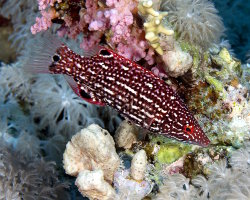
Diana's hogfish
(Bodianus diana)
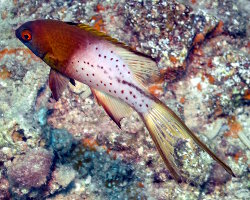
Lyretail hogfish
(Bodianus anthioides)

Mexican hogfish
(Bodianus diplotaenia)

Pacific Diana's pigfish
(Bodianus dictynna)

Tarry hogfish
(Bodianus bilunulatus)
Within the same family
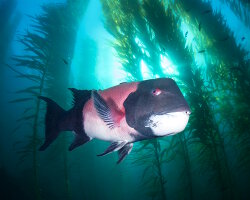
California sheephead
(Semicossyphus pulcher)

Checkerboard wrasse
(Halichoeres hortulanus)
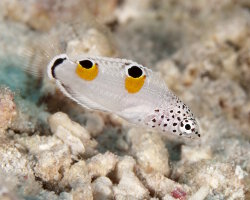
Clown coris
(Coris aygula)

Jansen's wrasse
(Thalassoma jansenii)

Knife razorfish
(Cymolutes praetextatus)

Moon wrasse
(Thalassoma lunare)
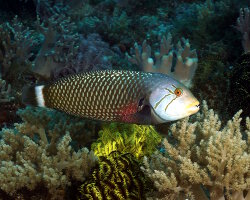
Rockmover wrasse
(Novaculichthys taeniourus)

Six line wrasse
(Pseudocheilinus hexataenia)
Discover also
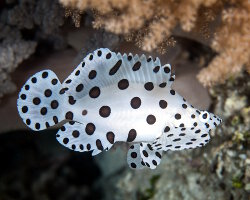
Barramundi cod
(Cromileptes altivelis)

Blacktip grouper
(Epinephelus fasciatus)

Bluering angelfish
(Pomacanthus annularis)
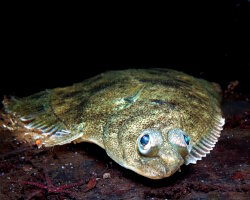
European flounder
(Platichthys flesus)
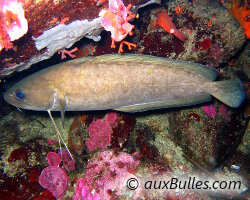
Forkbeard
(Phycis phycis)

Pictus blenny
(Ecsenius pictus)
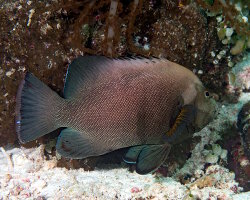
Redmouth grouper
(Aethaloperca rogaa)

Zebra moray
(Gymnomuraena zebra)
The marine species from Caribbean sea

Atlantic Goliath Grouper
(Epinephelus itajara)

Batwing coral crab
(Carpilius corallinus)
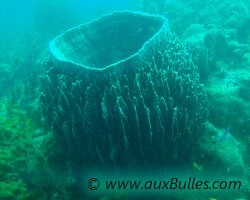
Caribbean giant barrel sponge
(Xestospongia muta)
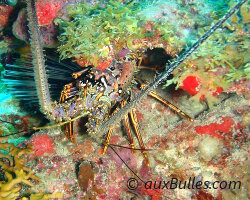
Caribbean spiny lobster
(Panulirus argus)

Checkered puffer
(Sphoeroides testudineus)

Longsnout seahorse
(Hippocampus reidi)
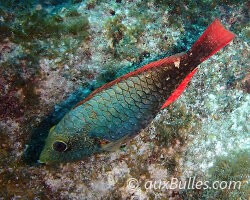
Redband parrotfish
(Sparisoma aurofrenatum)
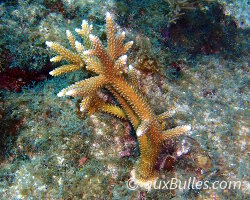
Staghorn coral
(Acropora cervicornis)
Dive centers

'Les Ilets' dive center
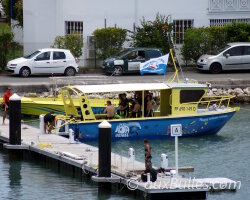
Noa dive center





































